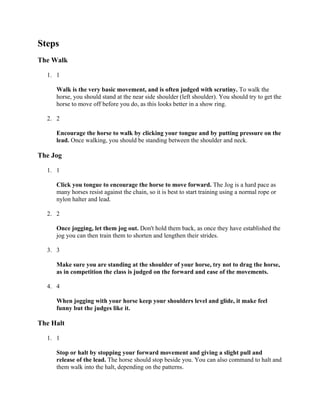Report
Share
Download to read offline

Recommended
Recommended
More Related Content
Featured
Featured (20)
Product Design Trends in 2024 | Teenage Engineerings

Product Design Trends in 2024 | Teenage Engineerings
How Race, Age and Gender Shape Attitudes Towards Mental Health

How Race, Age and Gender Shape Attitudes Towards Mental Health
AI Trends in Creative Operations 2024 by Artwork Flow.pdf

AI Trends in Creative Operations 2024 by Artwork Flow.pdf
Content Methodology: A Best Practices Report (Webinar)

Content Methodology: A Best Practices Report (Webinar)
How to Prepare For a Successful Job Search for 2024

How to Prepare For a Successful Job Search for 2024
Social Media Marketing Trends 2024 // The Global Indie Insights

Social Media Marketing Trends 2024 // The Global Indie Insights
Trends In Paid Search: Navigating The Digital Landscape In 2024

Trends In Paid Search: Navigating The Digital Landscape In 2024
5 Public speaking tips from TED - Visualized summary

5 Public speaking tips from TED - Visualized summary
Google's Just Not That Into You: Understanding Core Updates & Search Intent

Google's Just Not That Into You: Understanding Core Updates & Search Intent
The six step guide to practical project management

The six step guide to practical project management
Beginners Guide to TikTok for Search - Rachel Pearson - We are Tilt __ Bright...

Beginners Guide to TikTok for Search - Rachel Pearson - We are Tilt __ Bright...
Theory Night showmanship
- 1. Steps The Walk 1. 1 Walk is the very basic movement, and is often judged with scrutiny. To walk the horse, you should stand at the near side shoulder (left shoulder). You should try to get the horse to move off before you do, as this looks better in a show ring. 2. 2 Encourage the horse to walk by clicking your tongue and by putting pressure on the lead. Once walking, you should be standing between the shoulder and neck. The Jog 1. 1 Click you tongue to encourage the horse to move forward. The Jog is a hard pace as many horses resist against the chain, so it is best to start training using a normal rope or nylon halter and lead. 2. 2 Once jogging, let them jog out. Don't hold them back, as once they have established the jog you can then train them to shorten and lengthen their strides. 3. 3 Make sure you are standing at the shoulder of your horse, try not to drag the horse, as in competition the class is judged on the forward and ease of the movements. 4. 4 When jogging with your horse keep your shoulders level and glide, it make feel funny but the judges like it. The Halt 1. 1 Stop or halt by stopping your forward movement and giving a slight pull and release of the lead. The horse should stop beside you. You can also command to halt and them walk into the halt, depending on the patterns.
- 2. 2. 2 Determine the cue for halt. Some horses respond to a simply whisper of whoa, others a tug. Some stop when you stop moving. Experiment but ensure you allow enough time for the cue to sink in and be able to work. The Back 1. 1 Face the horses shoulder, this is the best way to encourage the horse back. Slightly pull the lead towards the horses chest, and move into the horse. An alternative way to start training is to put your hand on the chest and apply pressure. The horse should walk backwards slowly but with impulsion and forward movement. Pivots and turns 1. 1 This is by far the hardest thing to teach, as some horses get it and others don't. The same method applies for backing, but instead of moving entirely back with 4 footfalls, only two are used, and then a degree of turning. 2. 2 Train by allowing the horse to turn on the off side hind leg. In showmanship, the horses are placed higher if they pivot this way, however they do not get punished for pivoting on the hind near leg. If they pivot any other way points are taken off the score. 3. 3 Allow 5 to 10 minuets for one turn or pivot, as if you go slow, the horse is less likely to rush and confuse its self. As you progress, increase the pivot time until you can do it in a click of your fingers. Teaching 1. 1 You want your horse not to back up when pivoting. You should pull slightly forward while walking towards your horse's neck. It took me 3 months to train my horse, and got Reserve Champion that year. We started by teaching the horse how to cross the legs over and not worry about the hind. To push the shoulder over use a hand or spur to push it. As you get better walk your horse out of a pivot that they move their hind legs. Start at small potions of the pivot to earn your trust in thr horse that they know what they are supost to do.
- 3. The Stand Up or Presentation 1. 1 Halt the horse, and stand to the side with your toes facing 45 degrees at their toe. Getting another person to walk around the horse and you, change from side to side in front of the horses head. At this point it doesn't need to be accurate, just to allow the horse to get accustomed to the sudden changes of position. After about 6 changes, finish on the near side and then stand facing forward, and get the horse to walk off.